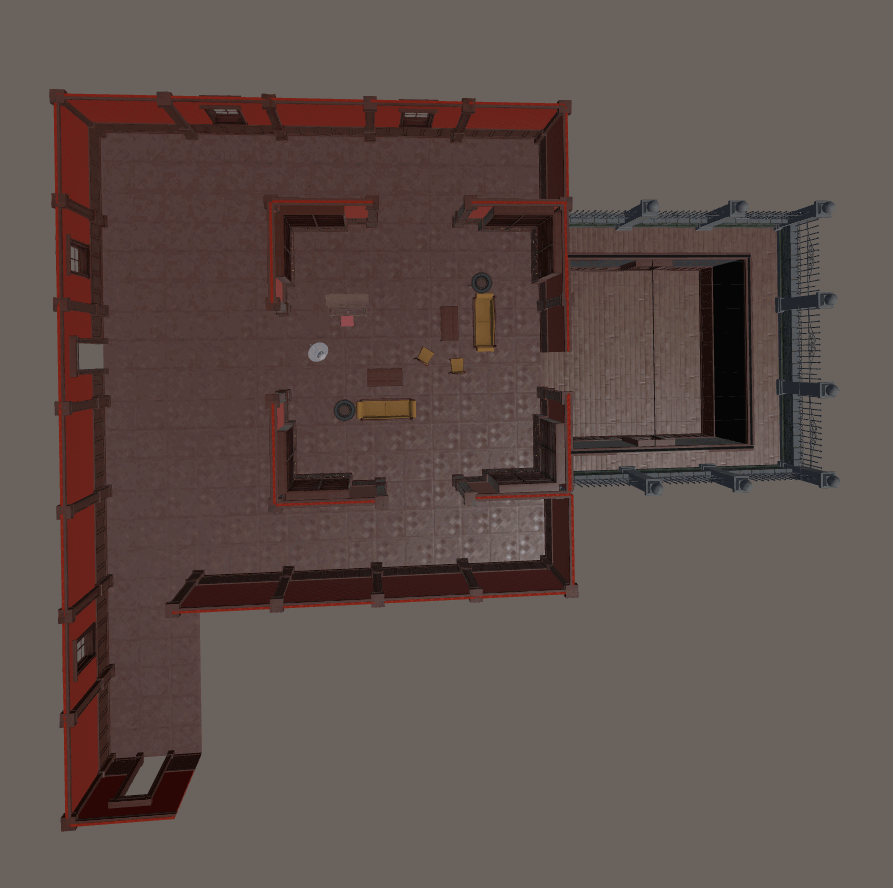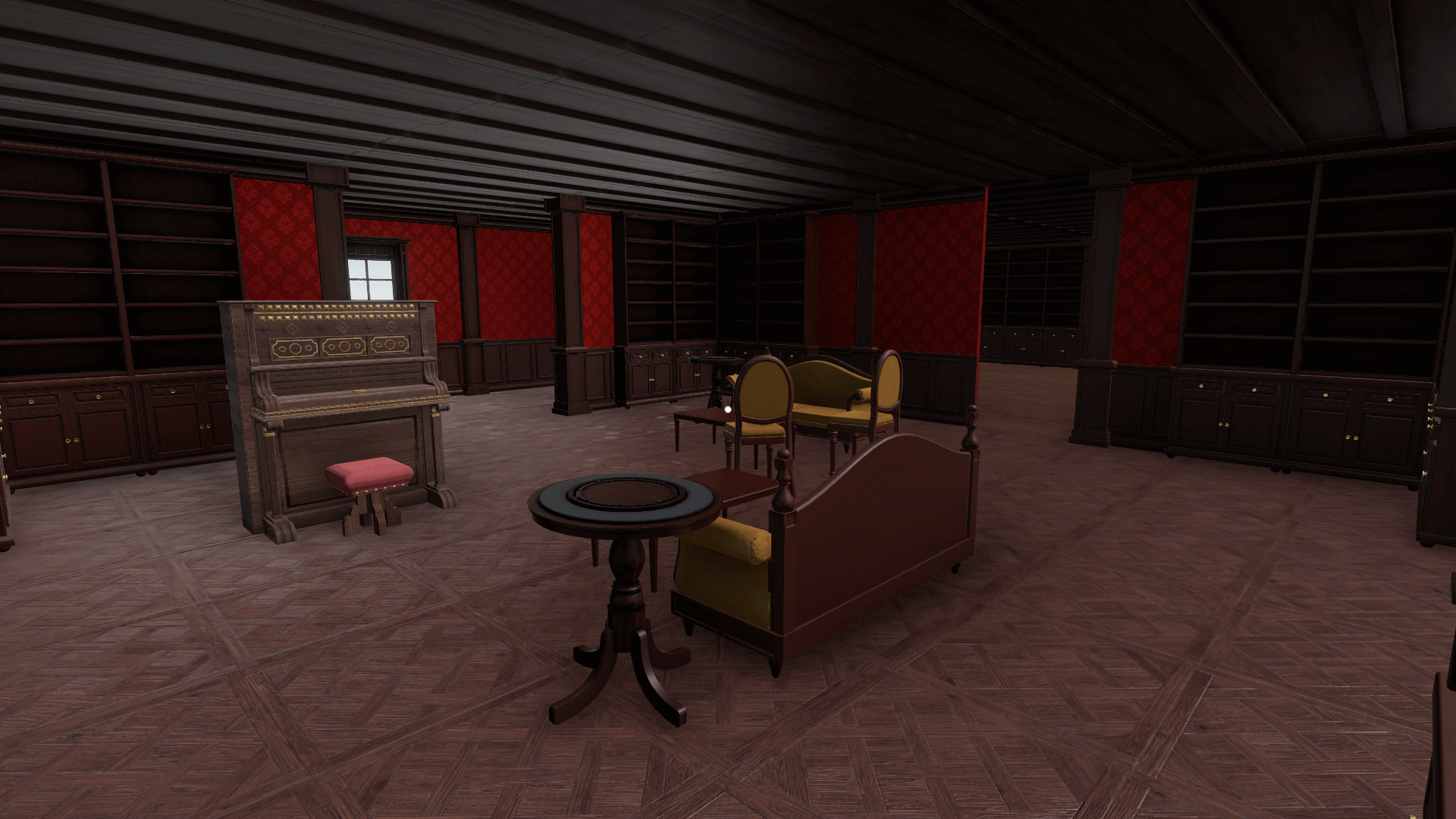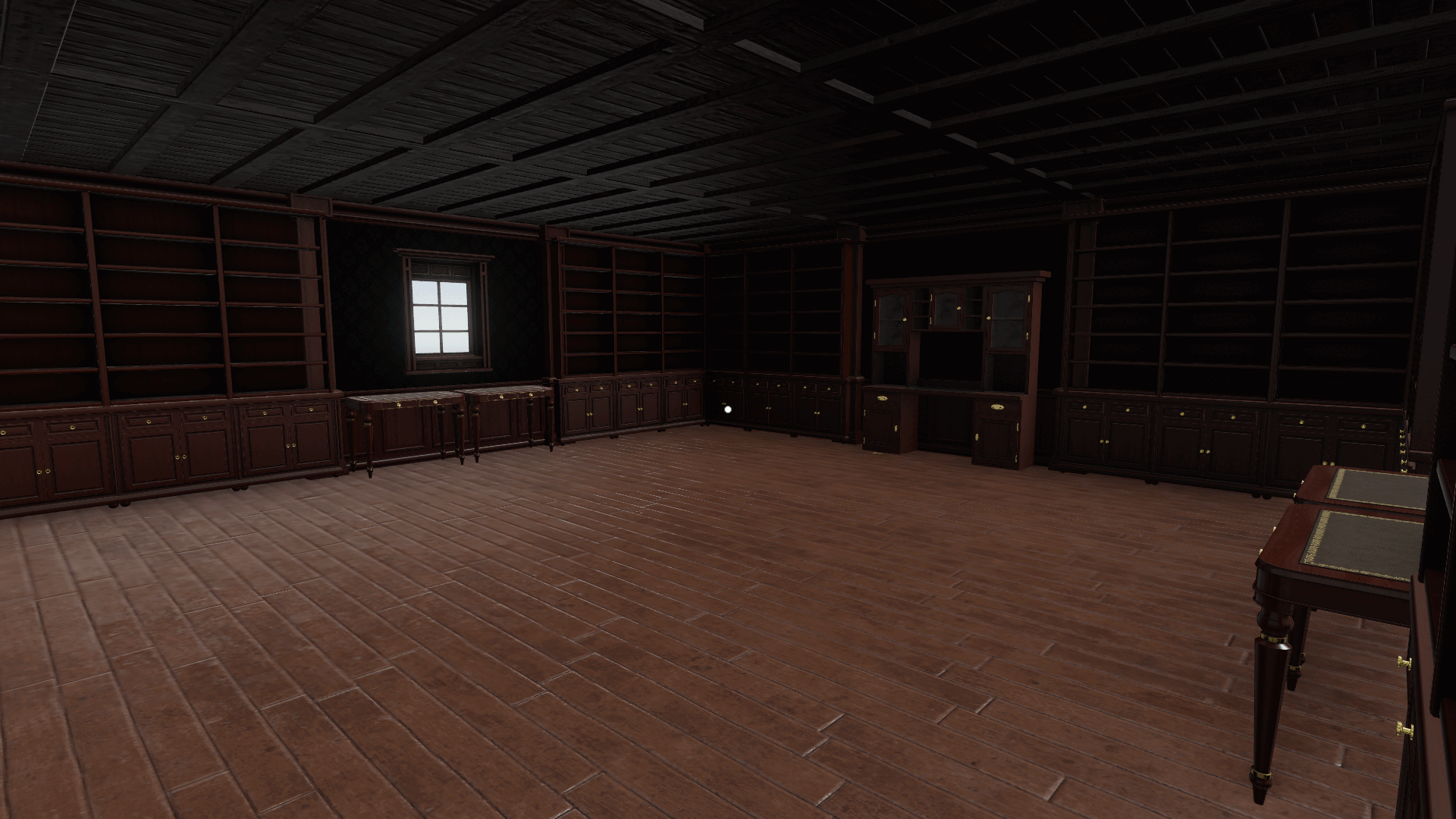
käty
olup


A Haunting Egg Hunt is an Easter- and Walpurgis-Night-inspired Escape Simulator community room. Escape Simulator offers a first-person puzzle game experience that allows players to explore interactive escape rooms in digital form. The game has an in-game level editor and community workshop that enables players to release their custom rooms, which is very handy for learning level design through practice.
individual
Level design
puzzle design
escape simulaotr
10 weeks
self-study

steam
workshop
release
overview
my responsibilities
level and puzzle design
-
Research Escape Simulator levels and community rooms
-
Design and prototype puzzles
-
Design and implement the layout of the level
-
Creating the level gameplay logic
-
Playtesting and iterating upon the level layout and gameplay
-
Setting up custom visual and audio feedback
environment art
-
Setting up lighting based on the intended mood
-
Creating lighting events
-
Set dressing the level
-
Creating custom assets
-
Outsourcing custom assets
-
Retexturing game assets to represent the reference interior more accurately
project showcase
reception
Downloads
2,884
Star rating
5/5
Ratings (89% positive)
675


project timeline
concepting
level proposal
pre-production
production
release
Playing reference games
Researching the chosen setting
Gameplay ideation sketches
Gameplay dynamics investigation
Level layout sketches
Level pillars and one-liners
Player experience (gameplay + narrative)
Amosphere and location
General level flow, key locations and events
Level sketches
Gameplay sketches
Prototyping
Level one-pager and documentation
QA, playtesting and iterations
Iterated level layout and visuals
Gameplay implementation
Narrative implementation
Environment art
Lighting
Custom events for level mood
Bug fixing
Set-dressing
Marketing
QA and playtesting
Minor iterations





level design
In A Haunting Egg Hunt, the player finds themselves in a historical mansion. They are introduced early to the first challenge as well as the exit of the room. All the puzzles have a linear structure, with the eggs being the reusable components throughout all the puzzles. While the level starts with a cheerful and sunny Easter afternoon, after finding all the eggs, it quickly turns into a dark, spooky, and rainy night, imitating the Walpurgis Night atmosphere.
The room is mainly a puzzle level and less of an escape room, since the project focused on practicing puzzle design for video game development. The level is a showcase of my artistic capabilities, alongside level and puzzle design skills and knowledge. It was great practice for reinforcing the intended player experience, both in the visuals of the level as well as gameplay
Level one-pager

Level vision
You play as Katherine, who has been sent to celebrate Easter at her aunt Linda's place in Estonia. Unfortunately, it's no ordinary house. You are left to seek Easter eggs and explore the old house. But be aware that Walpurgis Night is right around the corner, and Estonians like to get a little wicked during this time of the year.
Level pillars
Finding and discovering
As a player, I must keep an eye out for anything unusual or promising to find all the pieces required to complete the puzzle.
Experimentation
As a player, I will get the chance to experiment with different solutions to find out the right one.
Easter
As a player, I will get to experience an Estonian Easter tradition and learn new things through the festive and cheerful experience, which later turns into the complete opposite.
Walpurgis Night
As a player, I will get to experience a spooky Estonian/German Walpurgis Night tradition with a mysterious mood and setting change in the second half of the level.
Level play-through
player experience breakdown
Section one

1
2
3
4


Drawing room
As a player, I want the room to feel warm and joyous, as I imagine when thinking about Easter, yet I want there to be a somewhat eerie feeling accompanying the overly cheerful atmosphere to hint at the possible mood change.
To achieve the intended player experience in this area, post-processing was used to make the light and room feel warmer, which could be replaced with another post-processing to make the room feel cold and spooky after the mood switch.

1

2
A door that limits the player's field of view to direct the player's attention to the note on the ground and the egg basket in the distance. It allows the player to gradually receive information and therefore avoid being overwhelmed when starting the level.
After entering the corridor, the player is introduced to a door that stands out from the rest thanks to its white color as well as the cups next to it. The player receives information about what they could possibly need to finish the level. Next to the level is a basket with an egg tray in it to clearly communicate the goal of the first puzzle, which is finding eggs and placing them in the basket.

3

4
The locations of the eggs are usually quite tricky to find since it's what most players would expect from an egg hunt. However, all the locations are unique, which makes the searching more interesting and less repetitive.
After placing all the eggs in the basket, an event is triggered that changes the level mood and reveals a secret room behind a wall of the drawing room.
Section two

1
2
3
4


Witchcraft room
As a player, I want the witchcraft room to feel dark and mysterious, with a lot of witchcraft trinkets lying around to sell the idea that it's actively used by a witch.
To achieve the intended player experience in this room, a lot of clutter was added around the room that matches the vision that many have when thinking of a witch's room. In addition, the lighting and the edge of the world were made to add to the spookiness of the room.

1

2
There are two puzzles in the second room of the level. Firstly, a vial puzzle that provides a player with a mixture that is required for the second puzzle in the room. The second puzzle allows player to use the mixture and reveal patterns on eggs.
The first puzzle is completely independent and requires the player to find all the vials in the room that were made sparkly to indicate their importance and place them in the vial holder in the right spots, following Sudoku rules.

3

4
Player must reuse the eggs to advance in the egg coloring process.
After using the mixture to reveal the pattern on the eggs, the wall, and the cabinet where the puzzle the player just completed was on starts moving backwards, revealing the last room of the level.
Section three

1
2
3
4
3
3
3


Cauldron room
As a player, I want the cauldron room to feel like a potion-making workshop that is used to complete the egg coloring process.
To achieve the intended player experience, the clutter was greatly reduced to increase the clarity and possibility of effortlessly finding gameplay items. The room has a lot

1

2
The first part of the final puzzle starts in the second room with the poster on a wall, as well as the egg coloring recipe hinting at the next puzzle.
Since the player gets hinted that recipes will be necessary for the puzzle at a certain point, which can be found in the witchcraft room. The player must find the recipes and match them to the stand with the same pattern recipe and egg to know how to solve the puzzle.

3

4
After the player uses the right recipe for the right cauldron set-up, they can use the different components to complete the puzzle and receive colored eggs.
The player must place the colored eggs in the cups next to the exit door to unlock it and finish the level.

workflow breakdown
sketching


When sketching, the main goal was to explore different puzzle designs to find out which setups have potential. The sketches and designs were inspired by both puzzles from the base game as well as traditional puzzles, such as sudoku and pattern matching.
prototypes


I treat
gameplay implementation



In order
set-dressing



The final
level development




Conclusion
Positive take-aways
-
This project
Improvement points
-
During the development
